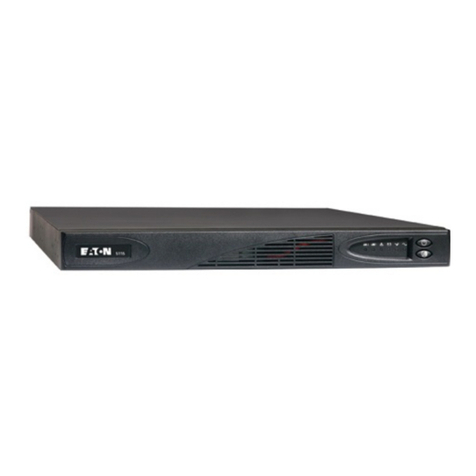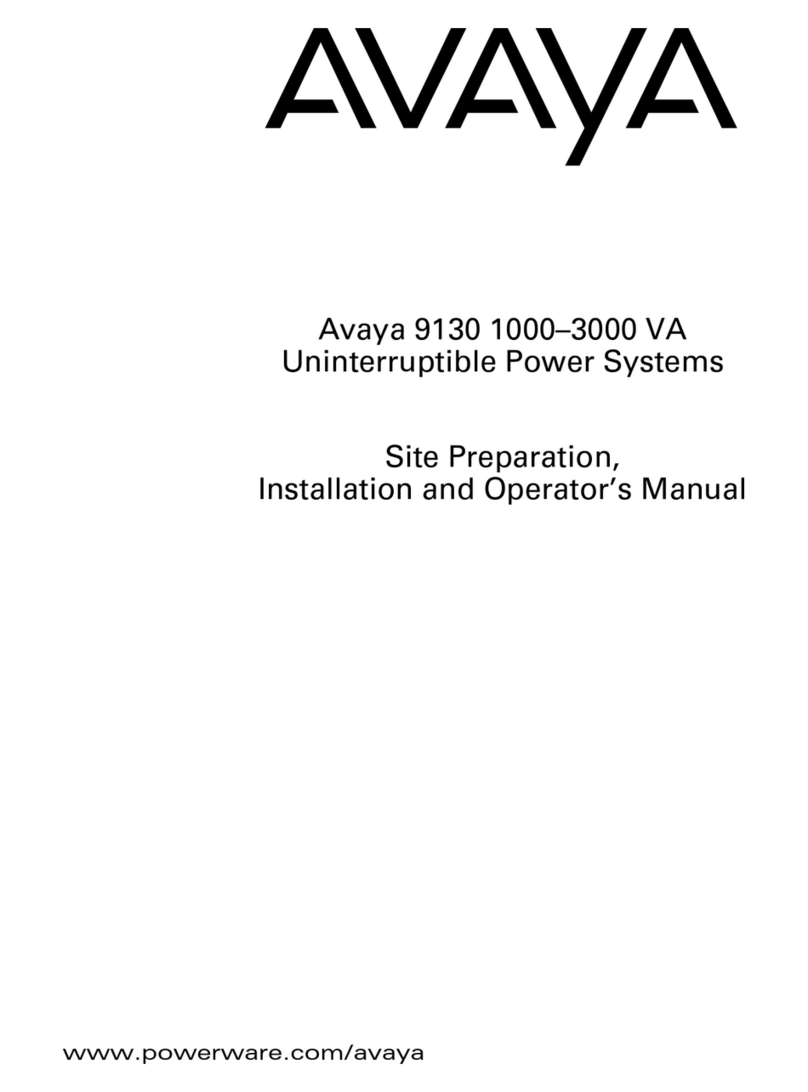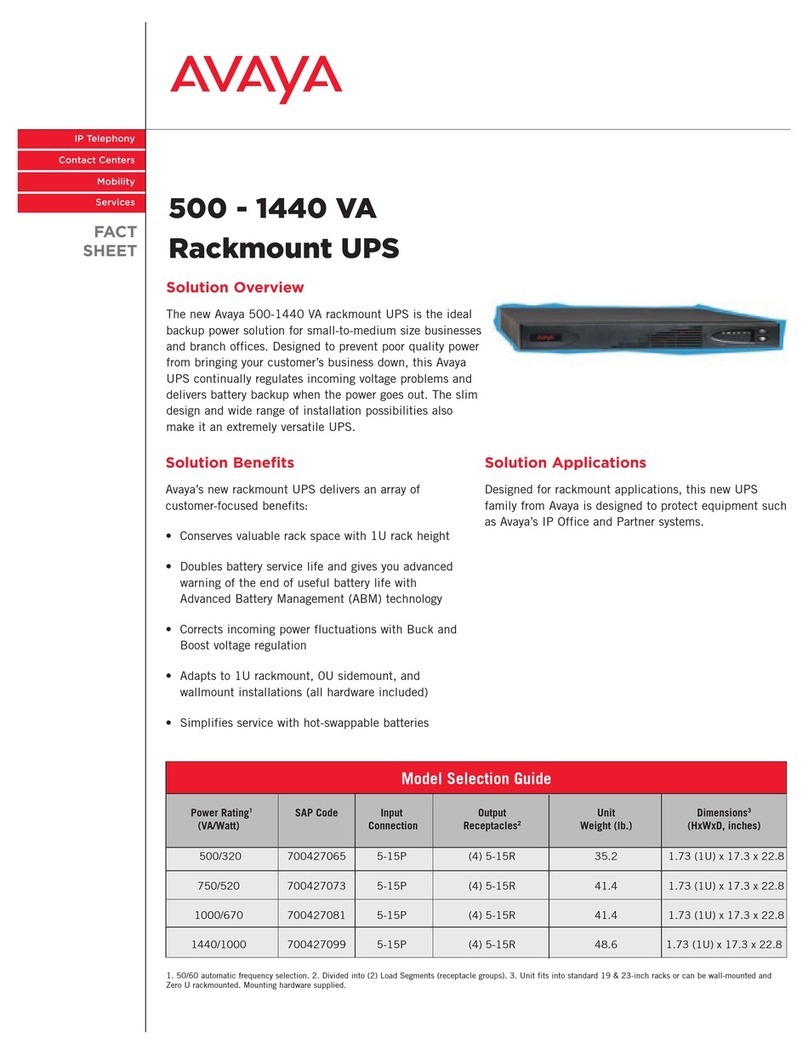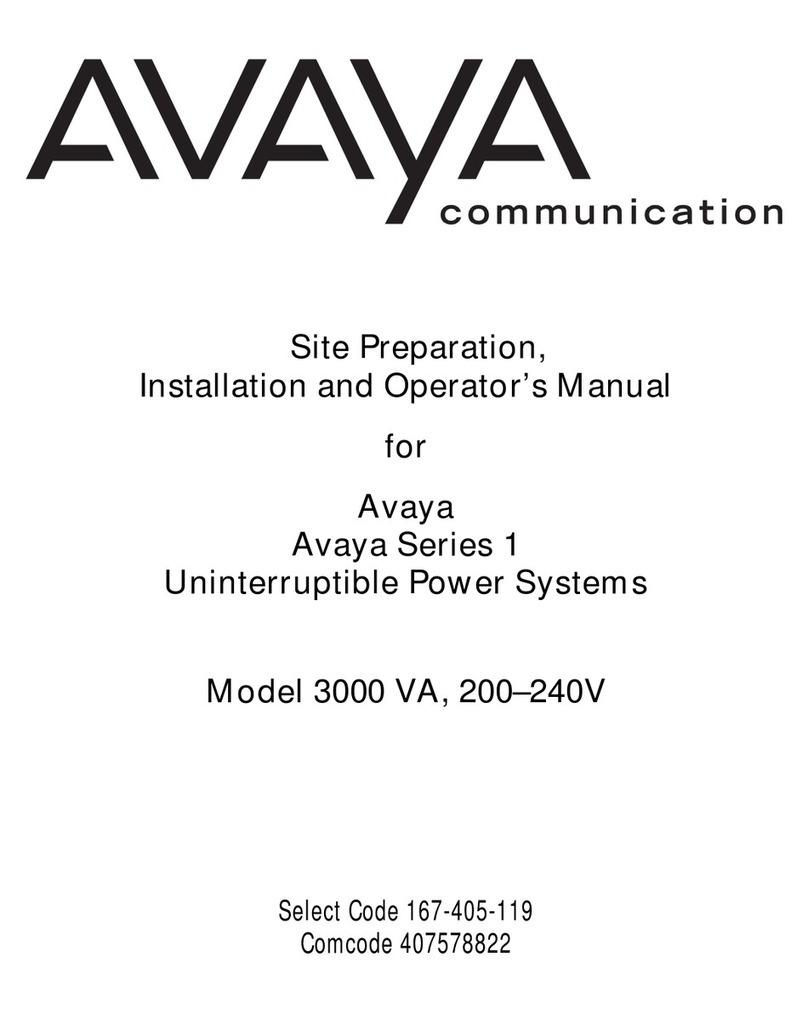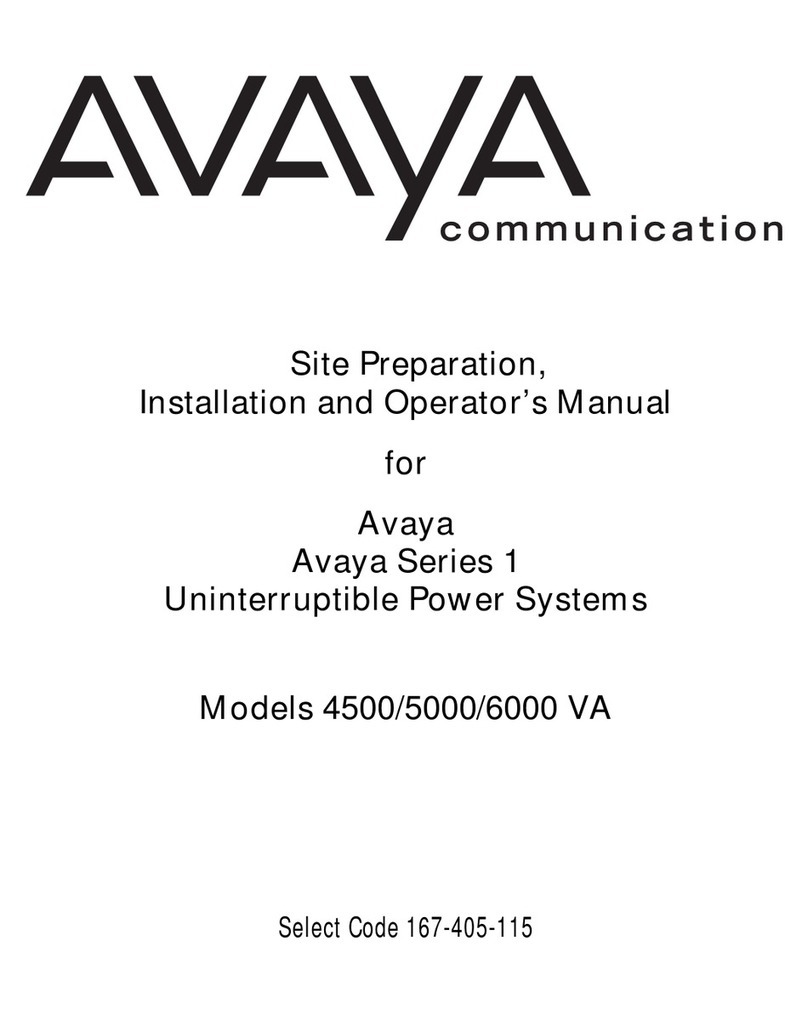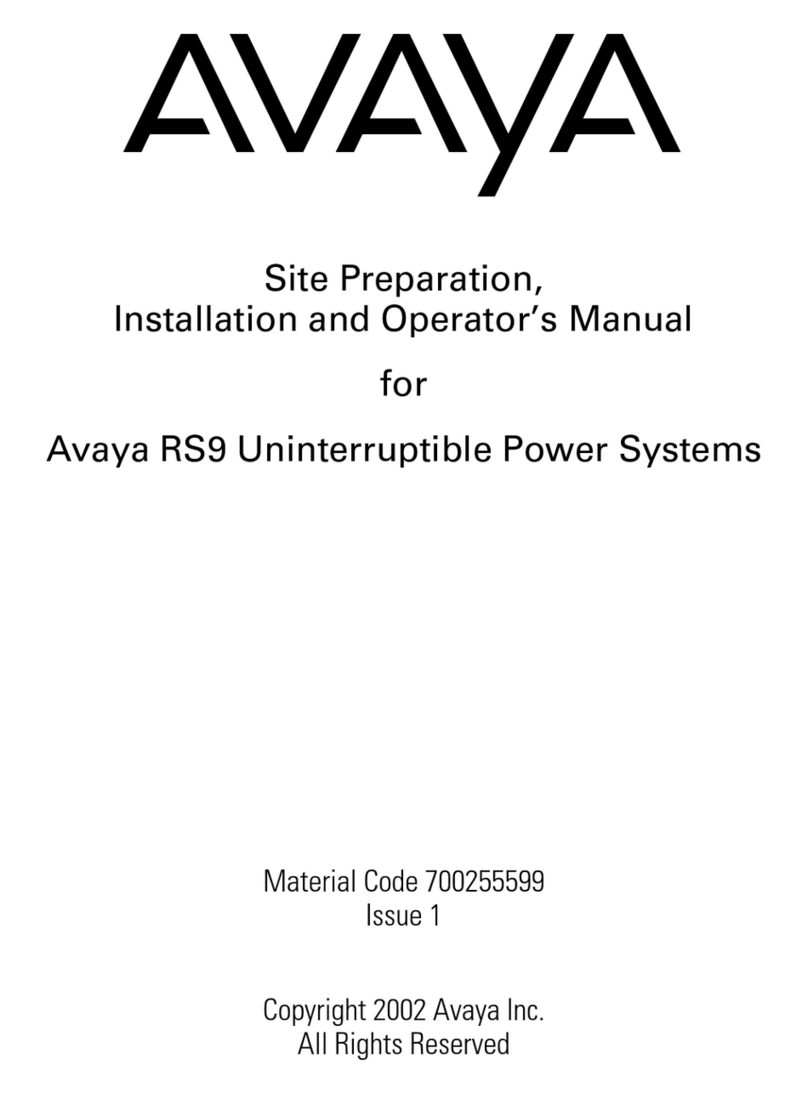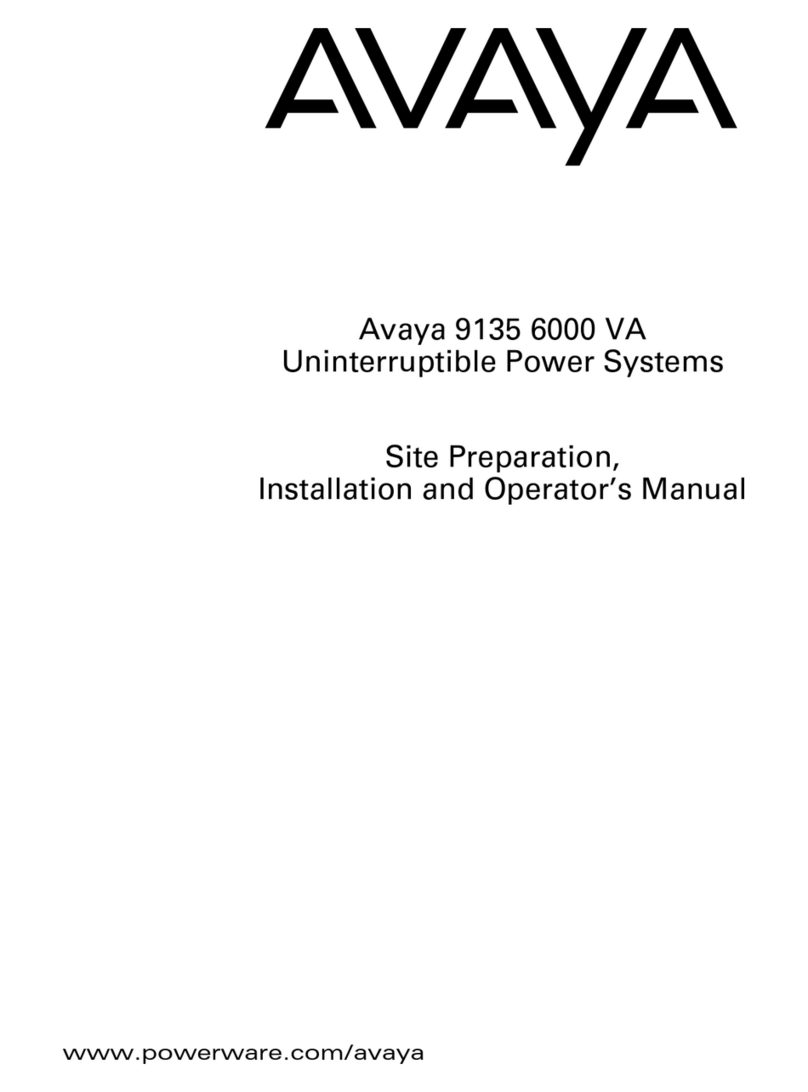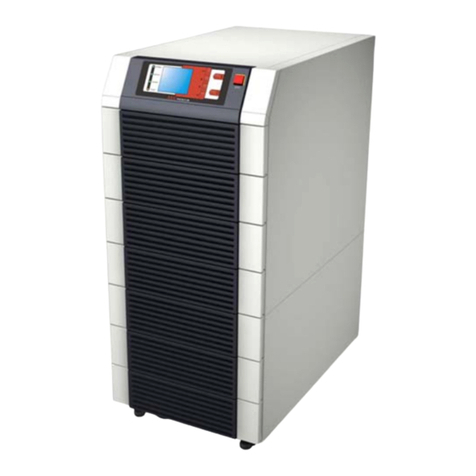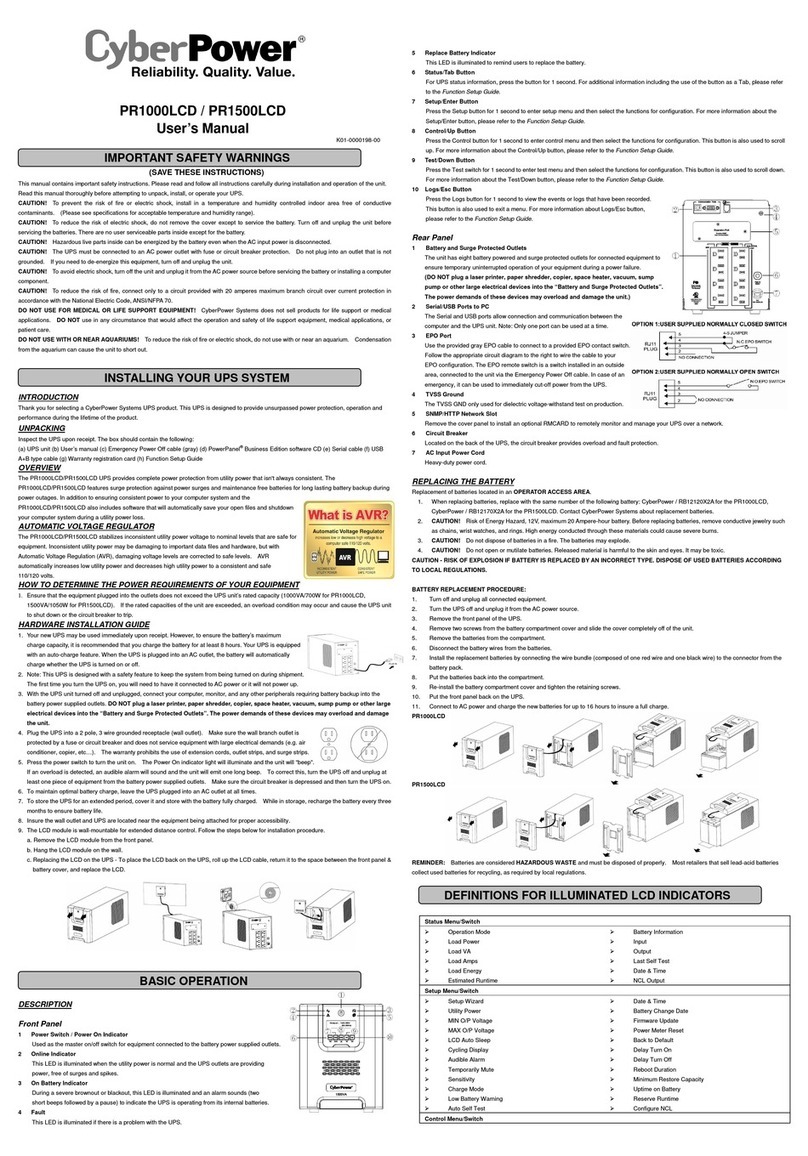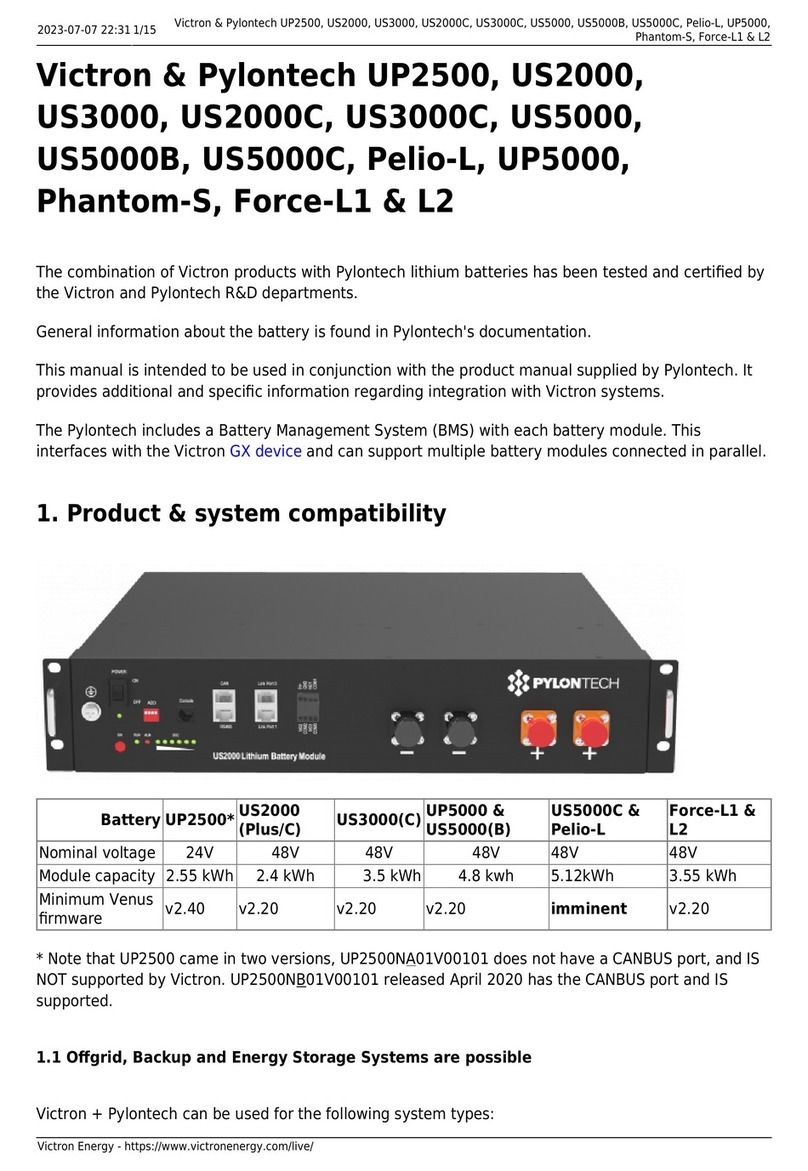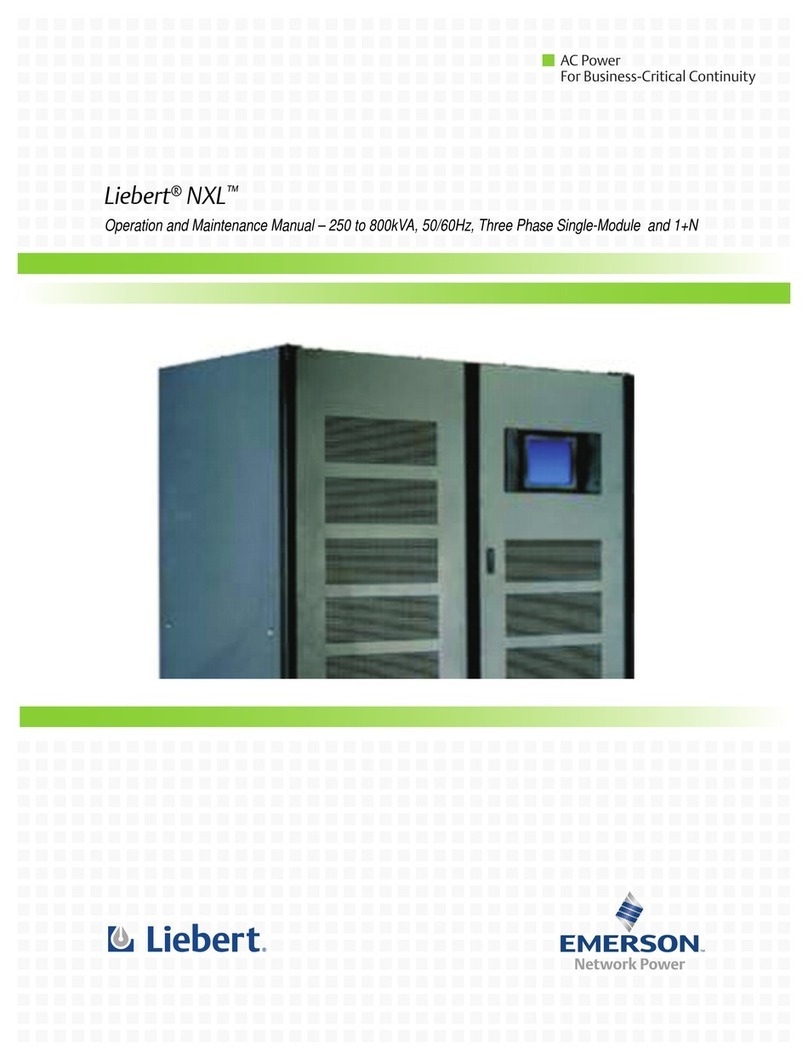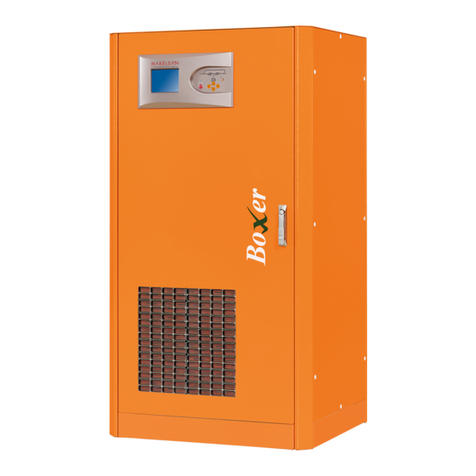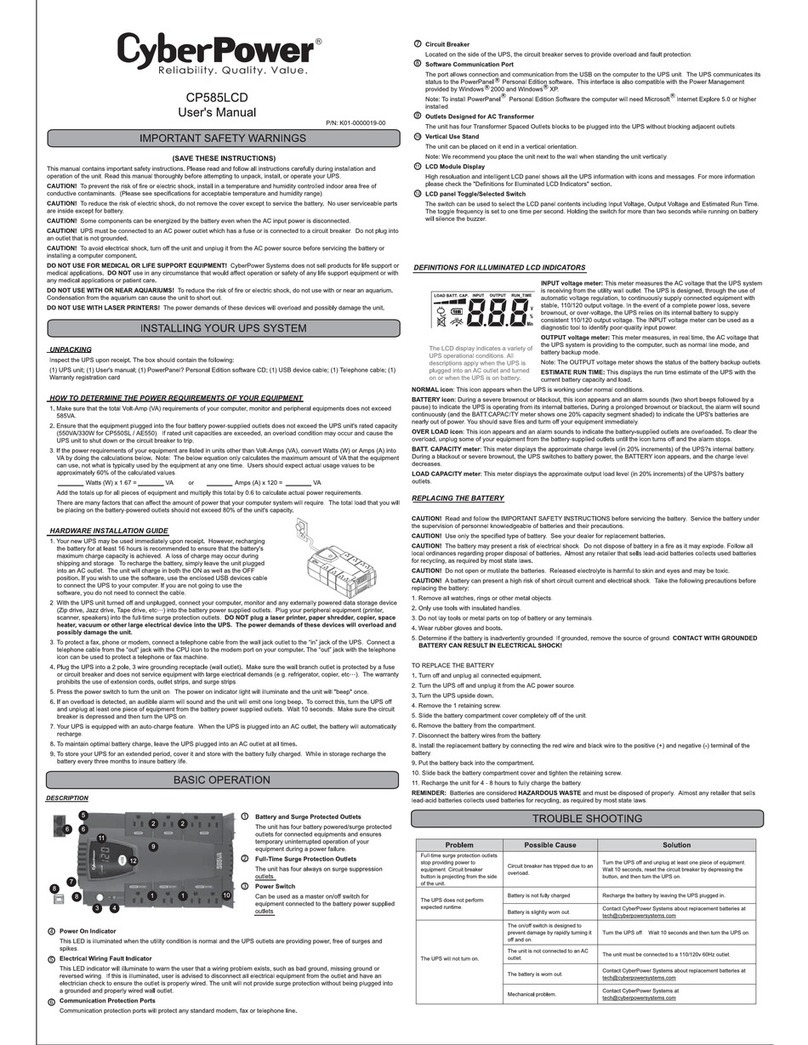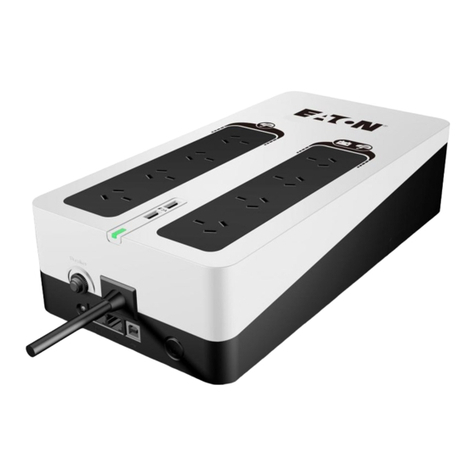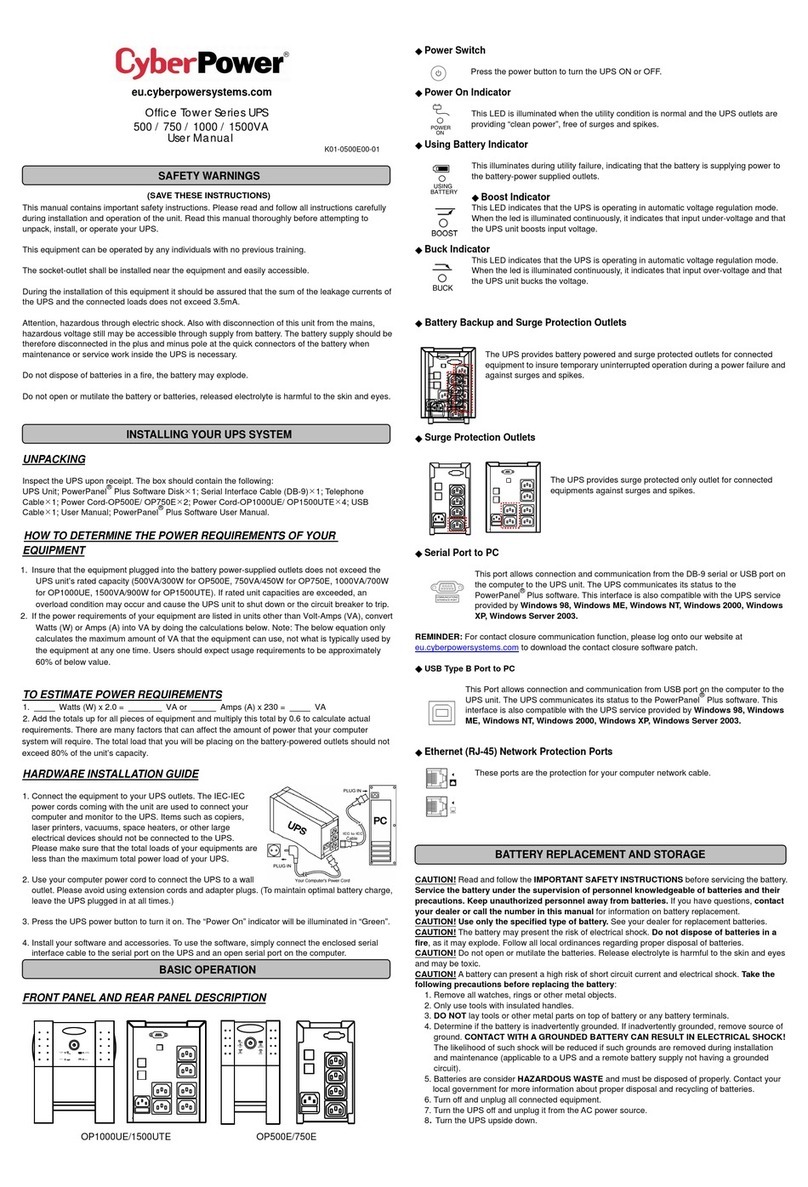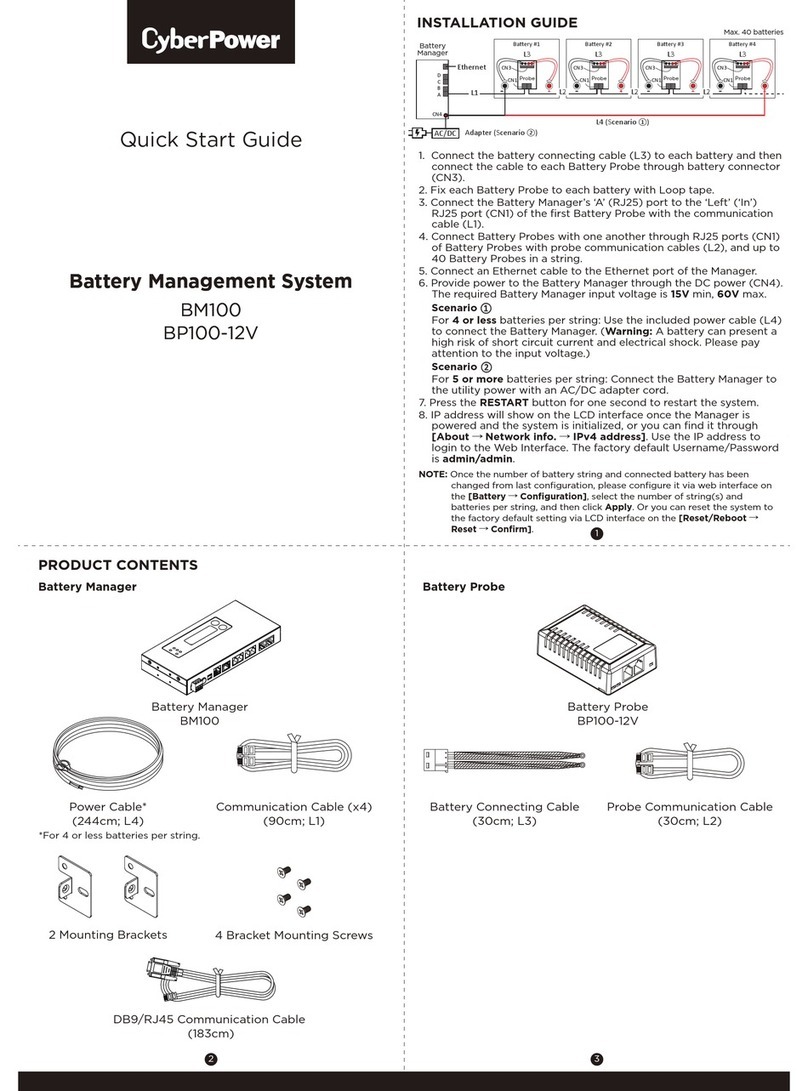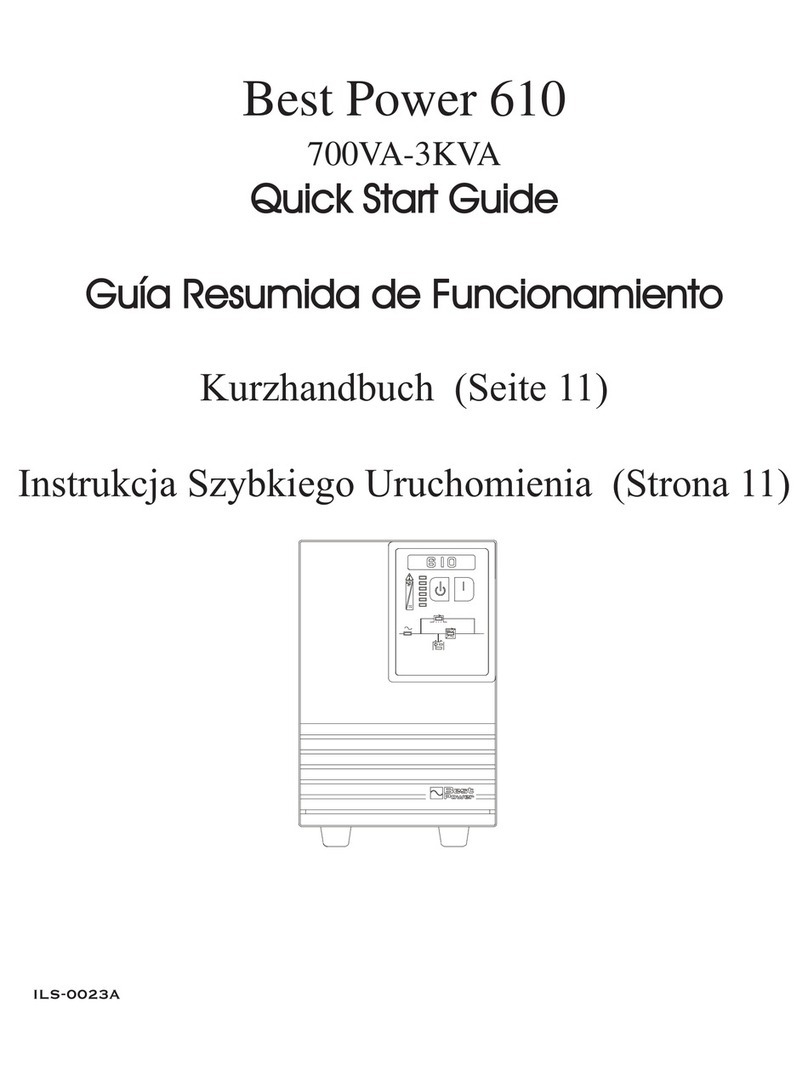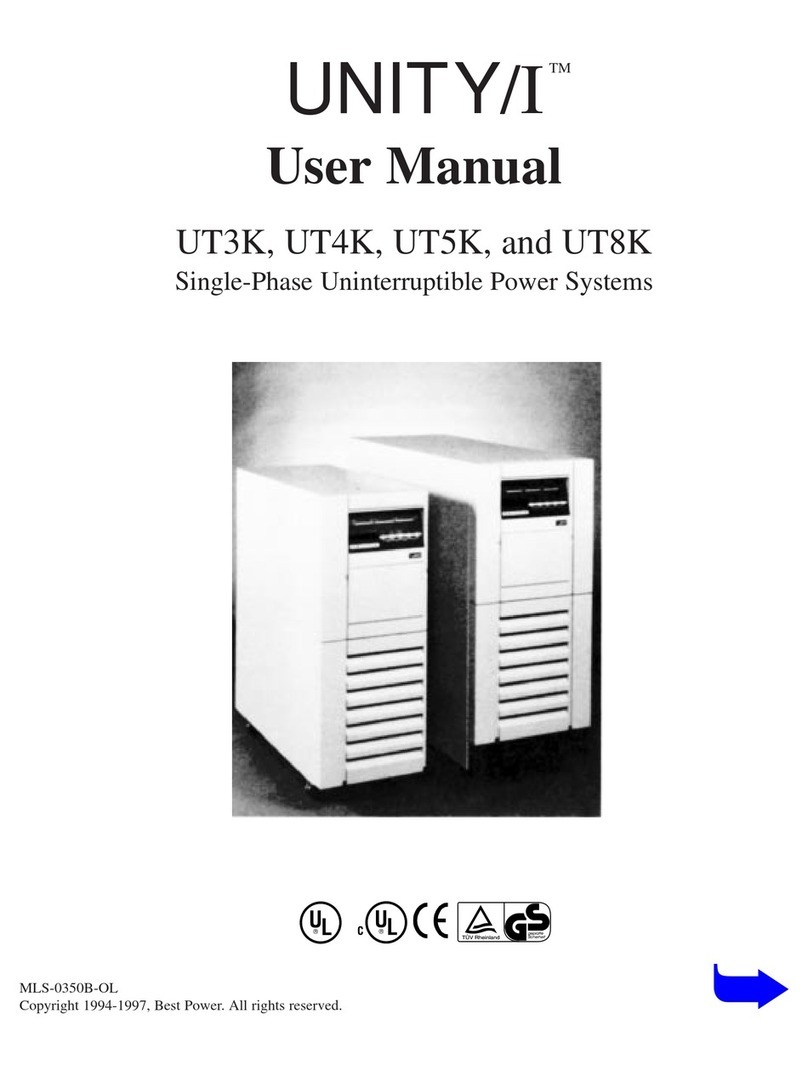
i
AvayatRS9 UPS (9–18 kVA, 9-Slot Models) Site Preparation, Installation and Operator’s Manual S164201543 Rev A
TABLE OF CONTENTS
1 Introduction 1....................................................
Power Modules 1..............................................................
Battery Configurations 1.........................................................
Battery Charger Modules 2.......................................................
Safety Warnings 2.............................................................
Physical Features 3.............................................................
2 Installation Setup 7...............................................
Equipment Clearances 7.........................................................
Location Requirements 7.........................................................
UPS Setup 8.................................................................
Moving the Cabinets 9..........................................................
3 Electrical Installation 11............................................
Input Current Ratings 12..........................................................
UPS Installation 13..............................................................
System Wiring Diagram 18........................................................
4 Battery Cabinet Installation 19.......................................
5 UPS Startup 23....................................................
Power and Battery Module Installation 24..............................................
UPS Startup 25................................................................
Initial Startup Parameters 27.......................................................
6 Operation 31......................................................
Turning the UPS On 32...........................................................
Removing Input Power 33.........................................................
Front Panel Display 33...........................................................
Using the Front Panel Display 34....................................................
Parameters 36.................................................................
Changing Parameter Settings 36....................................................
Reading the Avaya RS9 System Logs 37...............................................
Inverter Log 37..............................................................
Alarm Log 38...............................................................
Menu Map 39.................................................................
